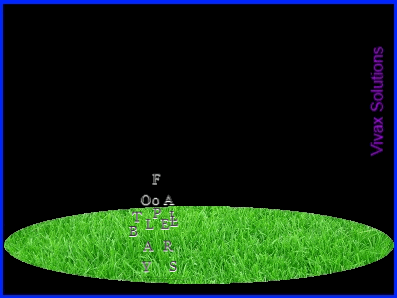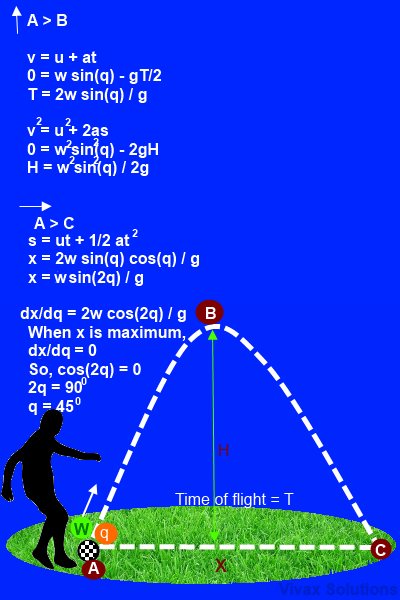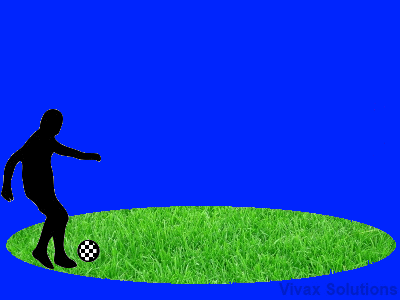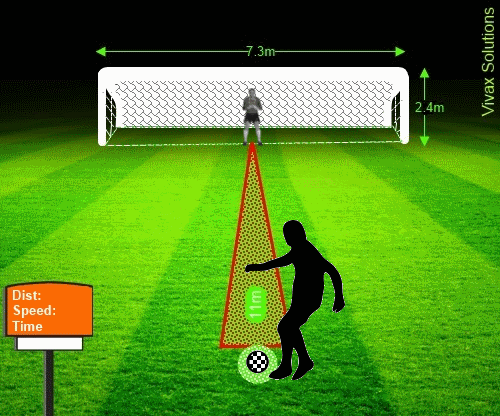Physics and Football
Physics is an immensely interesting field; it contributes a lot to the progress of our lives on regular basis, some of which we just take for granted. It plays a crucial role in the realm of sports too, even if those who are involved in them, are not aware of it.
Football, the most popular sports in the world, is one of them. There is no better time to look at the role played by physics in the game of football than the time when the FIFA Football World Cup 2014 is currently being played in Brazil, South America - the spiritual home of football.

Kicking and Impact on the Ball
When a footballer kicks a ball, the impact on the ball depends on the force exerted by the player and the time of impact; the greater the force and time, the greater the impact.
Since F = ma - Newton's Second Law of Motion - the ball gains an acceleration and hence, an instant high velocity too. The moment the ball loses its contact with the foot of the player, it moves under gravity.
Factors that Determine the Ball in the Air
There are three factors that determine the motion of a football while in the air:
- The velocity at which it leaves the foot of the footballer
- The angle between the kicking direction and horizontal
- The rotation of the football
The vertical component of the velocity moves the ball up and the horizontal component takes it horizontally. In other words, the football becomes a projectile.
Since there is no horizontal force, apart from the feeble air resistance, the horizontal acceleration is virtually zero. The ball however, decelerates vertically, then reaches the top and comes down with an acceleration - due to the influence of gravity.
The following diagram illustrates the motion of the football as a projectile; it is important to note, however, that the inevitable spin of the ball has been ignored to simplify the calculations. The rotation of the football, can drastically affect its motion, due to the drag of the air, which has not been into account in the following:

Maximizing the Horizontal Range
It can be proven mathematically that the horizontal range can be kept to a maximum by keeping the initial direction of the ball and horizontal closer to 450, if the drag and spin are negligible. For a free kick, getting this angle right is vital, while aiming to the goal from a significant distance.

If both the horizontal and vertical direction must be optimized, the angle between the kicking direction and horizontal should be 600.
The Physics of Penalty in Football

In the tournament of FIFA Football World Cup 2014, which is currently being played in Brazil, even some of the world-class goalkeepers have so far failed to save the penalties, which in some cases paved the way for the an early exit for the national teams that they represent.
Physics helps us understand the Herculean task faced by the goalkeepers when it comes to saving penalties.
The width and height of a goal are 7.3m and 2.4m respectively. The distance between the goal and penalty spot is 11m
A reputed footballer normally hits the ball at 31 m/s during a penalty shootout.
Pythagoras theorem helps us calculate the possible range of distances that the ball travels between the penalty spot and the goal.The distance ranges from 11.2m to 11.8m. Since the distance involved is relatively-small, we can assume that the ball travels in a straight line. On this basis, the time taken by the ball ranges from 362 milliseconds to 380 milliseconds - much less than a half a second.
No wonder, this is frightening enough to send a chill across the spines of hapless goalkeepers, who bears the brunt of the blame when his team loses in a tournament on penalties.
The success of saving a ball depends on two factors as soon as the ball is airborne - as far as the goalkeeper is concerned:
- Reaction Time
- Actual Physical Response
The goalkeeper must keep the combined time less than half a second for a saving. If he keeps the reaction time to a minimum, he can maximize the time taken for the actual physical response.
Unfortunately, doing neither is easy. Add this to cunning last-minute manoeuvres by the strikers purely for deception, the goalkeeper's job becomes next to impossible. That's why penalty takers often emerge victorious at the expense of goalkeepers.
in these circumstances, the only thing that a goalkeeper realistically can do is fixing his eyes on the football before it leaves the foot of the striker, in order to gauge the direction of its movement; if he waits till it is airborne, it is too little and too late!